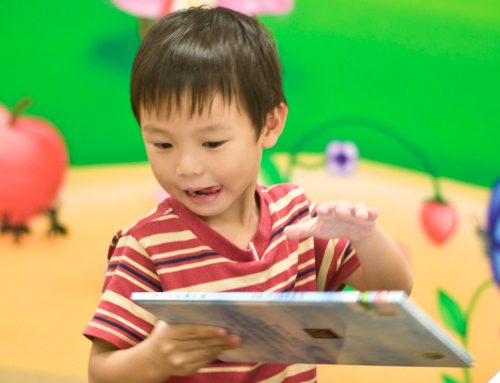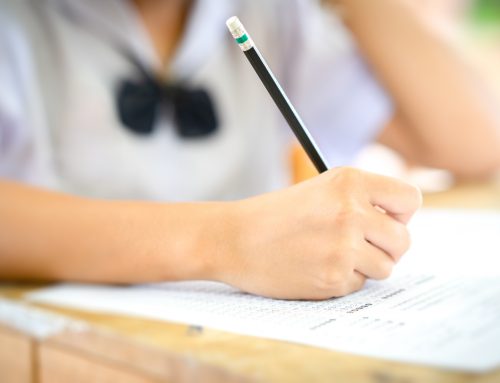Children develop at their own rate. But during their primary school, they’re expected to meet certain milestones. Think about all little breakthroughs your child made during his or her primary school years, from using complex terms to constructing a full logical sentence. It’s quite an incredible growth to see, right? Here are the developmental achievements that should be accomplished for kids in different levels of their primary school years.
Primary 1 to Primary 2
Listening:
- Differentiate syllable (音节), initials (声母), the rhyming part of a Chinese syllable (韵母) and tone (声调)
- Grasp important information such as characters, time, date etc.
- Catch nuances such as change of tone and emotional intonation etc. to facilitate understanding
Speaking:
- Read initials (声母), finals (韵母), tones (声调) and syllables (音节) clearly and correctly
- Pronounce words clearly
- Connect real-life experience and prior knowledge to grasp the content
- Speak in a structured manner
- Express clearly and completely
Conversational:
- Ask questions and respond appropriately to questions
- Ask for clarification when discourse is unclear
Reading:
- Recognize glyphs (字形), words, and meanings (about 600 to 650 words)
- Identify radicals (偏旁、部首)
- Understand reading materials with punctuation
- Read with Chinese pinyin, pictures, video, etc.
- Read text fluently with appropriate emotions while reading
- Discern the core and specific information of the content
Writing:
- Write 300 to 350 words
- Master basic strokes and write according to the stroke order
- Pay attention to the structure when writing
- Use punctuation correctly and write complete sentences

Primary School Chinese Learning Milestones: Chinese Skills to Expect at Different Stages
This stage is fundamental for primary school Chinese learning, and if it seems like it’s hard work, it indeed is. It could take some time to master so many things at once, and reading is a big part of their curriculum. Though there won’t be any more graded exams for kids in Primary 1 and 2, students will be graded using informal assessments such as discussions, homework and quizzes. To improve their Chinese skills, having a learning routine like doing homework and reading extra materials when there’s time is highly recommended (here are some supplementary books your primary school kids can read).
Primary 3 to Primary 4
Listening:
- Understand intonations
- Perceive the thoughts of the speaker
- Differentiate opinions
- Comprehend the sequence of event
Speaking:
- Hold a conversation around the centre of the topic
- Analyze the topic briefly and also elaborate
- Utilize the appropriate tone
- Adopt a natural tone with appropriate speech rate
Conversational:
- Express opinions and respond appropriately to the views of others
- Can complete a discourse
- Pick out speech content and terminology based on context and subject
- Hold a conversation with the right body language and tone, and also correct oneself with the assistance of body language and language reorganization
Reading:
- Recognizes glyphs (字形), words, and meanings (approximately 1200 to 1300 words)
- Infer the meaning of words and sentences
- Infer and predict the development and outcome of things
- Read with the assistance of reading tools
Writing:
- Write about 700 to 750 words
- Inputting Chinese Pinyin into Chinese characters and sentences
- Write in the correct format (such as two spaces at the beginning of the paragraph)
- Connect life experience and existing knowledge to create substantial content
- Complete writing based on given pictures
- Arrange paragraphs and organize them into articles
- Write descriptions clearly
- Check and correct writing with the help of writing tools
At this stage, the learning burden deepens. However, what kids learnt at this stage is built on their foundation acquired during primary 1 and 2. By the end of primary 4, they should be able to hold real, intelligible conversations. They’ll also begin to develop a streak of empathy. For example, you may encounter them distinguishing the emotions portrayed in the contents. Also, as of how kids are, one of their characteristics at this age could include impatience. However, you’d be pleased to know that they’re starting to learn how to focus and exercise patience while listening to others.
Superb Chinese Learning Habits That Every Student Should Master
Primary 5 & Primary 6
Listening:
- Spots implicit messages
- Performs inference and prediction based on the context and keywords
Speaking:
- Speaks according to situation and requirements
Reading:
- Recognizes glyphs (字形), words, and meanings (about 1600 to 1700 words)
- Understands implicit information
- Compares views, content, and characters
- Summarizes content including character progression, meaning, theme etc.
- Expresses opinions on characters, words etc.
Writing:
- Write 1000 to 1100 words
By this time, children should be able to indulge in their own opinions. You’d probably find them voicing their thoughts and views in a clear and structured manner. These days, your little one should be able to converse and interact in Mandarin confidently with peers and teachers. They should also have no issue with reading rhymes and poems out loud with the correct tones and composing simple stories and rhymes. You’d find them stringing words and phrases and even complete sentences when narrating a story or expressing ideas.
In other news, now’s a great time to give their conversational technique a significant tune-up if you’d like to boost this particular skill. Now that your child is turning into quite a conversationalist, impatience remains a consistent hallmark in a kid’s development. You may have noticed them (trying very hard) to patiently wait for their turn to speak during dialogue. That’s a good thing because it shows that your kid is growing to become more empathic during conversations. As their language skills evolve, they should typically be able to include appropriate details when sharing personal experiences. These details should, at times, include adjectives (“He is a naughty boy”) and adverbs (“I have to walk slowly; I’m having a tummy ache”). They should also be able to express basic needs, preferences and desire, such as “I don’t like red; I prefer pink” and “I prefer the character to be in a park rather than on a beach”.
If you’re pondering over what needs to be done to make Chinese learning easier for your child, sign up for a free trial lesson with Connected Learning.







